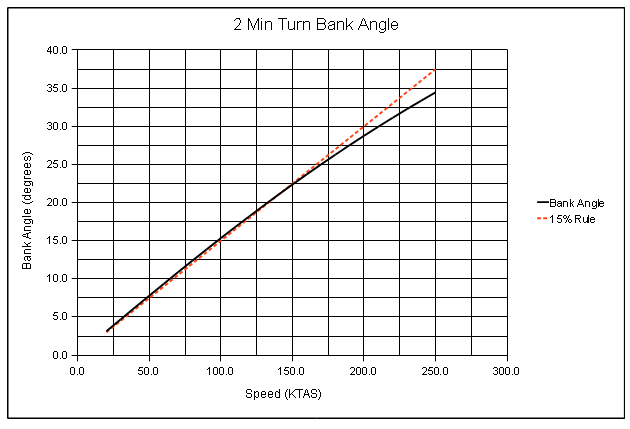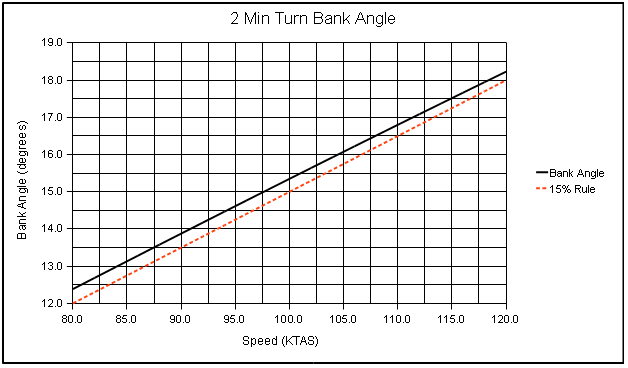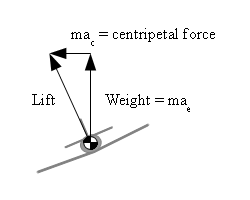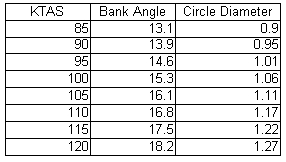
The following article is for learning purposes only and is based on certain assumptions. Method, rules and equations given should be used at the discretion of the reader, actual conditions and variables may invalidate the methods, rules or equations in this article. When flying an actual airplane, the reader should follow all FAA approved material and procedures.
During instrument flying 2 minute turns are typically flow. One of the questions a pilot may have is how do I know what bank angle to hold and how large of a circle is being flow. In the speed range of most GA airplanes there are two simple rules that will help in known the bank angle and the circle diameter. These rules are for airspeed between 80 KTAS to 120 KTAS with all turns being coordinated. The circle diameter is based on no winds, if there are winds aloft, the drift of the airplane must be included. The approximate rules for bank angle and circle diameter are :
For example if a plane is flying at 100 KTAS, the bank angle for a 2 minute turn should be approximately 15 degrees (100 x 0.15 = 15) and the diameter of the circle would be 1.1 nautical miles (100 x 0.011 = 1.1). The computed bank angle is 15.3 degrees (2% error) and circle diameter would be 1.060 nautical miles (3.6% error).


The
follow assumptions were used in computing the bank and and
circle diameter.

| Equation 1 |  |
Equation 2 |  |
| Equation 3 |  |
Equation 4 |  |
The above equations are combined to yield the final equation below.

